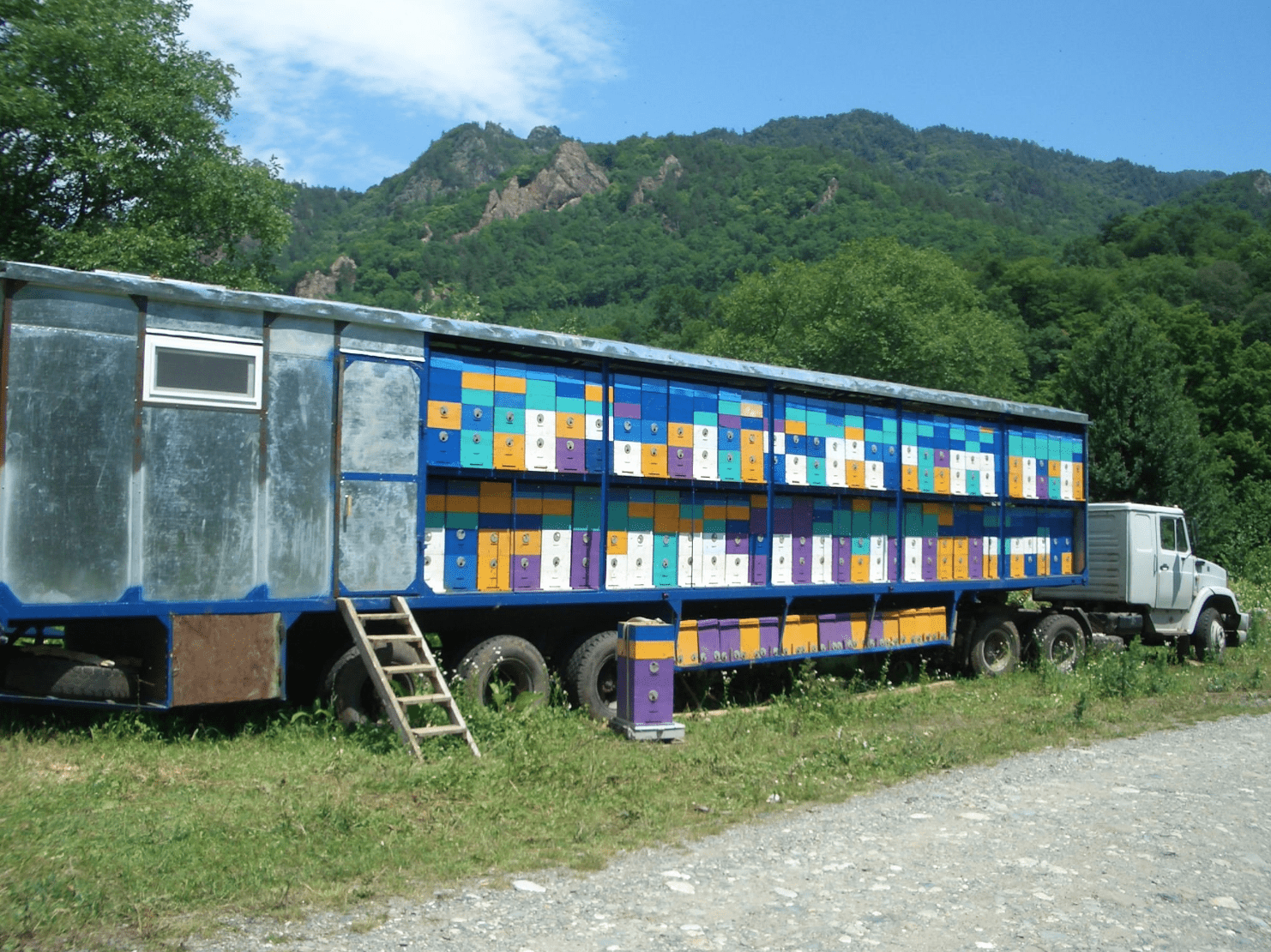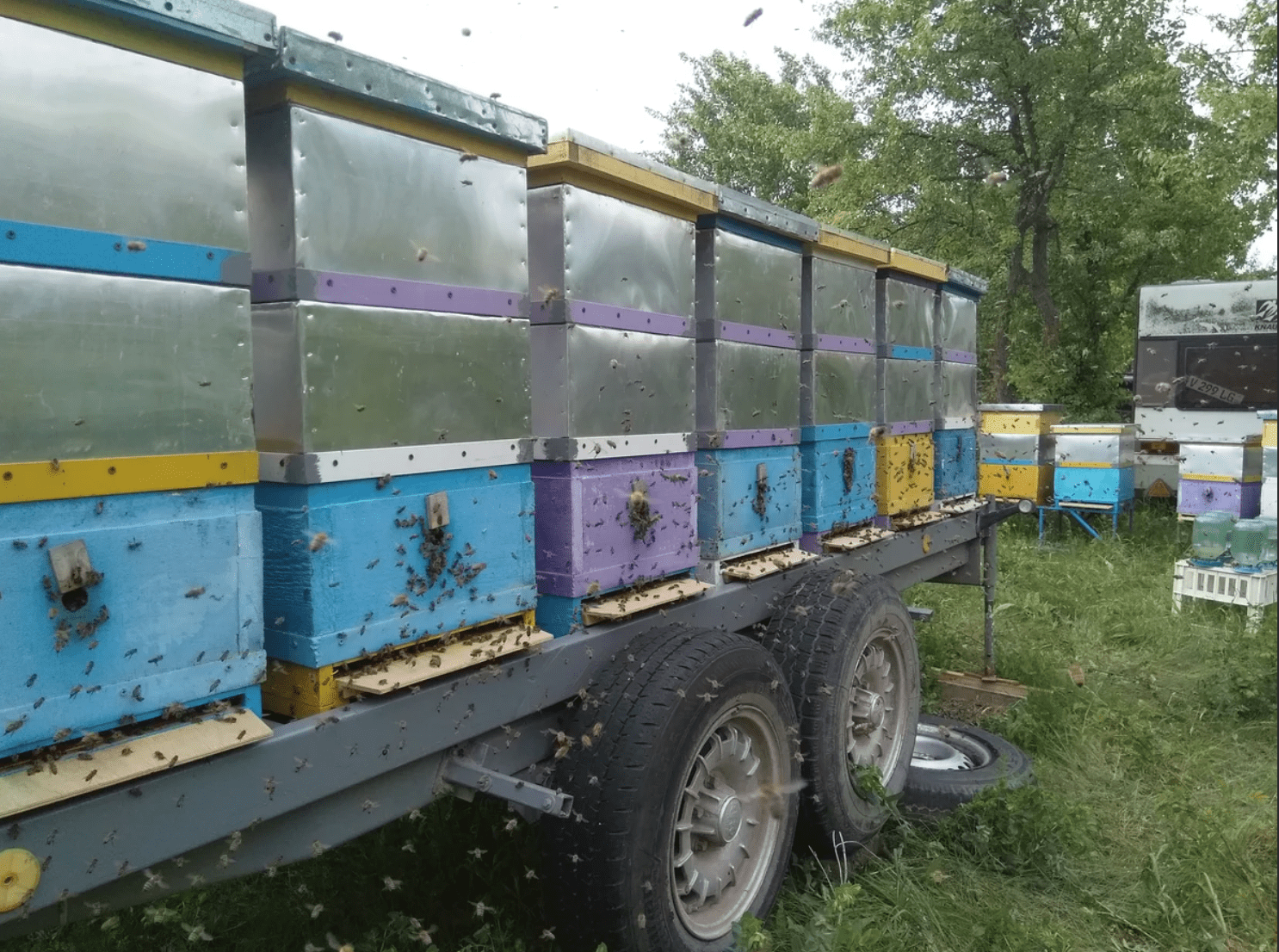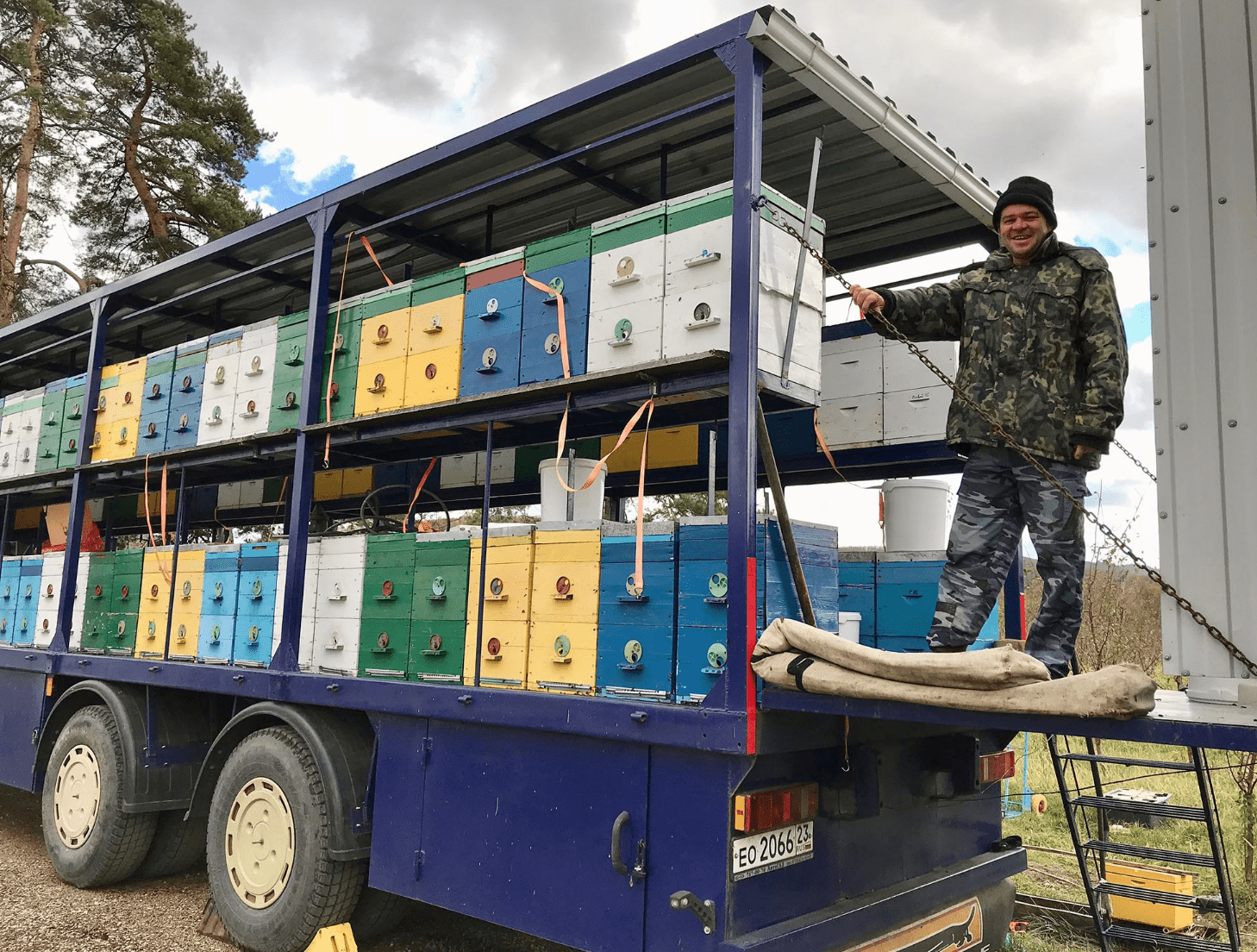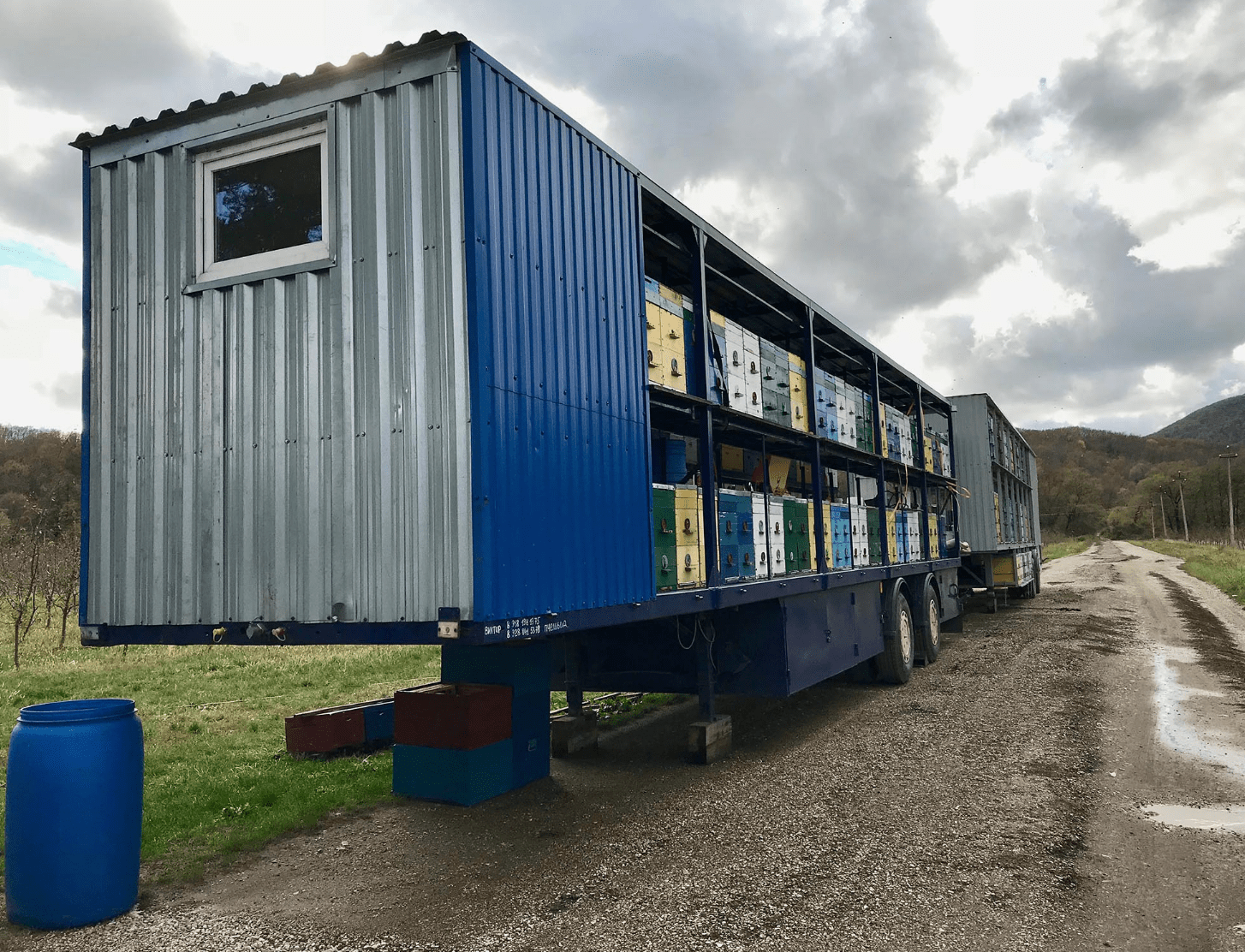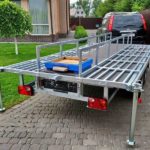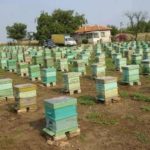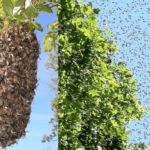The principle of a nomadic apiary is based on transporting bees from place to place to collect nectar. Beekeepers claim that this way they can get more honey than in a traditional apiary, which is more economical. Let's consider the reasons for the emergence of this breeding method, the advantages and disadvantages, what transport and equipment are required, how to properly prepare the hives, when to transport the hives and what conditions are required for this.
Reasons for appearance
Nomadic beekeeping was developed because beekeepers do not always have enough space for insects to feed from it constantly.Transporting hives makes it possible to find new places where bees can take a lot of nectar, you can get a pure type of honey - from the type of plant that is preferred. This type of beekeeping is used if the food supply is not suitable for the bees.
The standard distance that bees fly from houses is 2-5 km; houses need to be moved to this distance or a little more. It is advisable to carry out transportation 2 times per season, it is not recommended anymore.
Pros and cons of nomadic apiaries
Nomadic apiaries are used because this is the only way to collect the pure type of honey that is valued by buyers. A larger volume of produce can be collected than from a traditional apiary because the bees have unhindered access to food. You can start harvesting earlier than the standard time, and the harvest time is extended until late autumn. The honey collection work schedule can be easily controlled.
The use of a nomadic apiary is especially recommended for those beekeepers who have difficulty choosing a place in a nearby area or simply want to get more products from the hives.
Transport requirements
The type of transport depends on the number of hives, frequency of transport, category and driver. If there are a lot of hives, you need a heavy-duty machine. If the weight of the houses is more than 750 kg, then the driver needs to obtain a category E license. If a category C license, then it is necessary to re-equip the vehicle.
When using a tractor and trailer, you must obtain a special license.If the beekeeper does not have transport and licenses, then there is still a way out - you can order transportation from companies. Sometimes they use decommissioned equipment, for example, a bus, which can accommodate at least a dozen hives.
Inventory
For transportation and work in the apiary, various devices and equipment will be required. For transportation, you need to stock up on a net to provide the insects with sufficient ventilation and prevent them from becoming steamed. You need to purchase beams that are used to level and fasten the rows of hives, and a sling mesh to cover the houses from the outside (then you can use it on site to make a canopy for the beekeeper). The beekeeper will also need to make and take with him a house to live in and household supplies.
To work with bees you will need: a main and spare smoker, carpentry tools. Roevny, a spray bottle, empty houses where bees can be moved if necessary, a lantern.
Preparation for transportation of hives
During spring transportation, when it is not hot outside, only fastening devices will be required. In summer, there may already be honey in the frames, so to prevent them from falling on the bees and brood during transportation, they need to be removed from the houses and placed around the perimeter of the trailer. The immobility of the frames must be ensured with special dividers. If honey collection is completed, the hive can be transported along with the honeycombs.
If transportation will take more than a day, the houses must be covered with a net to protect them from overheating. All objects inside the hives that could fall must be secured and securely fixed. It is advisable to remove the honeycombs and frames.
Under what conditions can bees be transported?
It is best to transport bees at night or during the day in cloudy weather, when it is not hot. At night, insects sleep, there are fewer cars on the roads, and on a rainy day, the risk of honeycomb melting and falling is reduced.
The best time for transportation is after the insects have come out of winter; if you transport them to the place early, they will quickly get used to it. In the spring there is not yet a lot of brood and adult bees in the houses; there is no honey in the frames yet, which is why they weigh little. This makes transporting hives much easier.
The nomadic apiary method is recommended for those beekeepers who have a limited area in which to keep bees. Transportation to different places provides more opportunities to obtain a significant amount of honey and improve its quality. A nomadic apiary has many advantages, but for such breeding you need to have transport, find new places suitable for collecting and live in the apiary yourself or hire guards.

